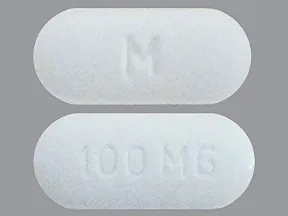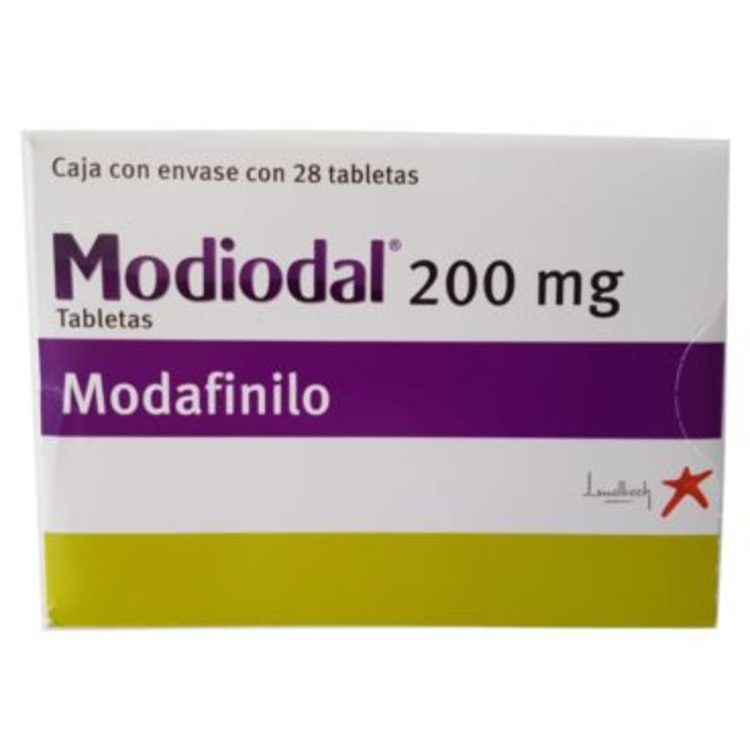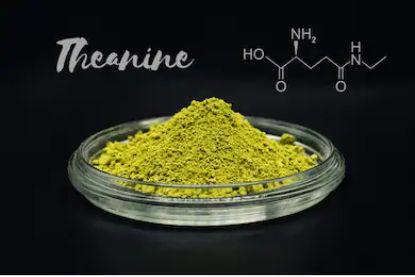Be Golden as gold mine & Green as leaf
carpe diemBe Golden as gold mine & Green as leaf
carpe diemL-Theanine
L-Theanine

L-theanine is an amino acid found most commonly in tea leaves and in small amounts in Bay Bolete mushrooms. It can be found in both green and black tea. It’s also available in pill or tablet form at many drugstores.
Research indicates that L-theanine promotes relaxation without drowsiness. Many people take L-theanine to help ease stress and unwind.
Before trying it out yourself, learn more about the potential health benefits, as well as any possible risks or complications
.
Most known for helping people relax, L-theanine has many other potential health benefits, including:
Anxiety and stress-relief
A hot cup of tea can help anyone feel more at ease, but research suggests it may be the most beneficial for those dealing with high levels of anxiety.
Five randomized-controlled trials with a total of 104 participants found L-theanine reduced stress and anxiety in people who were experiencing stressful situations.
Another study found that it increased relaxation without causing drowsiness and reduced resting heart rate.
A study published in the Journal of Clinical Psychiatry focused on people with schizophrenia or schizoaffective disorder. Researchers found that L-theanine decreased anxiety and improved symptoms

.
Increased focus
Paired with caffeine, L-theanine may help increase focus and attention.
A 2013 study found that moderate levels of L-theanine and caffeine (about 97 mg and 40 mg) helped a group of young adults to focus better during demanding tasks.
The study’s participants also felt more alert and less tired in general. According to another study, these effects can be felt in as little as 30 minutes.
Better immunity
Some research suggests that L-theanine may improve the function of the body’s immune system. One study published in the journal Beverages found that L-theanine could help decrease the incidence of upper respiratory tract infections.
Another study found that L-theanine could help improve inflammation in the intestinal tract. However, more research is needed to confirm and expand on these findings.
Tumor and cancer treatment
The authors of a 2011 study suggest that L-theanine found in the Bay Bolete mushroom works together to improve the effectiveness of certain chemotherapy drugs.
Because of these promising findings, the same biotechnology researchers expect that L-theanine could also help improve chemotherapy’s ability to fight cancer.
Although there’s no definitive evidence to show that tea prevents cancer, a number of studies suggest that people who regularly drink tea have lower rates of cancer.
Researchers of one study in China found that women diagnosed with ovarian cancer who drank at least one cup of green tea a day lived longer than those who didn’t.
Another study that looked at tea drinkers compared to nondrinkers found that those who drank tea were 37 percent less likely to develop pancreatic cancer.
Blood pressure control
L-theanine may be beneficial for those who experience increased blood pressure in stressful situations.
A 2012 study observed people who normally experienced higher blood pressure after certain mental tasks.
They found that L-theanine helped control this blood pressure increase in those groups. In the same study, the researchers noted that caffeine had a similar but less beneficial effect.
Improved sleep quality
Some research indicates that L-theanine could be beneficial for a good night’s sleep. Researchers in one study found that doses of 250 mg and 400 mg of L-theanine greatly improved sleep in animals and humans.
Also, 200 mg of L-theanine was shown to reduce resting heart rate, pointing to its ability to promote relaxation.
L-theanine may also help boys diagnosed with attention deficit hyperactivity disorder (ADHD) sleep better.
A 2011 study looked at the effects of L-theanine on 98 boys aged 8 to 12. A randomized group was given two 100 mg chewable tablets of L-theanine twice daily. The other group received placebo pills.
After six weeks, the group taking L-theanine was found to have had longer, more restful sleep. While the results are promising, more research is needed before it can be proven as safe and effective, especially for children.
Other research found that L-theanine improved sleep quality for those diagnosed with schizophrenia.
Sinusitis relief
If you’re experiencing sinusitis, a cup of tea may help you find some relief.
Murray Grossan, MD, author of The Whole Body Approach to Allergy and Sinus Health and founder of the Grossan Sinus & Health Institute, notes that L-theanine can boost cilia movement in the nose.
Cilia are the hair-like strands that help clear up mucus that can be affected by an infection.
“In sinus disease, the cilia of the nose no longer pulse to remove stale mucus from the nose and sinuses,” he says.
“Instead, the mucus becomes thick, and this provides a place for bacteria to multiply. When the tea is added, the cilia speed up, mucus thins, and healing is on its way.”
There are no confirmed or direct side effects of taking L-theanine. Generally speaking, it’s safe to take the supplement and drink teas that contain L-theanine.
But even though some research shows promising results for L-theanine’s anti-tumor properties, teas that contain amino acids can have other ingredients that could be harmful for people with cancer.
According to Memorial Sloan Kettering Cancer Center, the polyphenol EGCG found in green tea can actually reduce the efficacy of some chemotherapy drugs, such as bortezomib.
For that reason, it’s very important for those taking chemotherapy drugs to consult their doctors before drinking large amounts of green tea as part of their treatment plan.
Similar to drinking too much coffee and other caffeinated drinks, drinking large amounts of caffeinated teas can also cause problems, such as:
Women who are pregnant or breastfeeding should also limit how much tea they drink to avoid over-caffeinating. It’s best to ask your doctor about what’s safe for you. The same advice applies to children as well.
Because there’s been no conclusive research, a safe L-theanine dosage recommendation isn’t known. There have been no reports of overdose or side effects of taking L-theanine, and drinking tea is generally safe for most people.
But following general caffeine consumption guidelines can be helpful if you’re drinking tea. For those taking an L-theanine supplement, it’s best to consult your doctor for guidance on dosageModafinil
Modafinil

Uses
Modafinil reduces extreme sleepiness due to narcolepsy and other sleep disorders, such as periods of stopped breathing during sleep (obstructive sleep apnea). It is also used to help you stay awake during work hours if you have a work schedule that keeps you from having a normal sleep routine (shift work sleep disorder).
This medication does not cure these sleep disorders and may not get rid of all your sleepiness. Modafinil does not take the place of getting enough sleep. It should not be used to treat tiredness or hold off sleep in people who do not have a sleep disorder.
It is not known how modafinil works to keep you awake. It is thought to work by affecting certain substances in the brain that control the sleep/wake cycle.
How to use Modafinil
Read the Medication Guide provided by your pharmacist before you start using modafinil and each time you get a refill. If you have any questions, ask your doctor or pharmacist

Side Effects
Headache, nausea, nervousness, dizziness, or difficulty sleeping may occur. If any of these effects persist or worsen, tell your doctor or pharmacist promptly.
Remember that your doctor has prescribed this medication because he or she has judged that the benefit to you is greater than the risk of side effects. Many people using this medication do not have serious side effects.
Tell your doctor right away if you have any serious side effects, including: fast/pounding/irregular heartbeat, mental/mood changes (such as agitation, confusion, depression, hallucinations, rare thoughts of suicide).
Get medical help right away if you have any very serious side effects, including: chest pain.
A very serious allergic reaction to this drug is rare. However, get medical help right away if you notice any symptoms of a serious allergic reaction, including: fever, swollen lymph nodes, rash, itching/swelling (especially of the face/tongue/throat), severe dizziness, trouble breathing.
Precautions
Before taking modafinil, tell your doctor or pharmacist if you are allergic to it; or to armodafinil; or if you have any other allergies. This product may contain inactive ingredients, which can cause allergic reactions or other problems. Talk to your pharmacist for more details.
Before using this medication, tell your doctor or pharmacist your medical history, especially of: heart problems (such as enlarged heart, mitral valve problem, chest pain, heart attack, irregular heartbeat), heart problems after taking stimulant drugs such as amphetamines (including chest pain, irregular heartbeat), high blood pressure, liver problems, mental/mood disorders (such as depression, mania, psychosis), personal or family history of a substance use disorder (such as overuse of or addiction to drugs/alcohol).
Sleep disorders may reduce your ability to react quickly. Though modafinil helps keep you awake, you still may not be able to safely do things that require quick reactions (such as driving). This drug may also make you dizzy. Alcohol or marijuana (cannabis) can make you more dizzy. Do not drive, use machinery, or do anything that needs alertness until you can do it safely. Avoid alcoholic beverages. Talk to your doctor if you are using marijuana (cannabis).

Interactions
Drug interactions may change how your medications work or increase your risk for serious side effects. This document does not contain all possible drug interactions. Keep a list of all the products you use (including prescription/nonprescription drugs and herbal products) and share it with your doctor and pharmacist. Do not start, stop, or change the dosage of any medicines without your doctor's approval.
Some products that may interact with this drug include: street drugs (such as methamphetamine, MDMA/"ecstasy").
This medication may decrease the effectiveness of hormonal birth control such as pills, patch, or ring. This could cause pregnancy. Discuss with your doctor or pharmacist if you should use additional reliable birth control methods while using this medication and for 1 month after stopping this medication. Also tell your doctor if you have any new spotting or breakthrough bleeding, because these may be signs that your birth control is not working well.
Modafinil can speed up the removal of other medications from your body, which may affect how they work. Examples of affected drugs include axitinib, bosutinib, certain products used to treat chronic hepatitis C (asunaprevir, ombitasvir/paritaprevir/ritonavir), among others.
Some products have ingredients that could raise your heart rate or blood pressure. Tell your pharmacist what products you are using, and ask how to use them safely (especially cough-and-cold products or diet aids).
Caffeine can increase the side effects of this medication. Avoid drinking large amounts of beverages containing caffeine (coffee, tea, colas), eating large amounts of chocolate, or taking nonprescription products that contain caffeine.
Modafinil is very similar to armodafinil. Do not take medications containing armodafinil while using modafinil.
.
Overdose
If someone has overdosed and has serious symptoms such as passing out or trouble breathing, call 911. Otherwise, call a poison control center right away. US residents can call their local poison control center at 1-800-222-1222. Canada residents can call a provincial poison control center. Symptoms of overdose include: fast/irregular heartbeat, severe restlessness, hallucinations.
Notes
Do not share this medication with others. Sharing it is against the law.
Laboratory and/or medical tests (such as blood pressure, heart rate) may be performed periodically to monitor your progress or check for side effects. Consult your doctor for more details.
Follow good sleep habits (such as sleeping in a dark/quiet room, avoiding caffeine close to bedtime) which can help improve your sleep if you have shift work sleep disorder.
Missed Dose
If you miss a dose, take it as soon as you remember. If it is near the time of the next dose, skip the missed dose. Take your next dose at the regular time. Do not double the dose to catch up. Do not take missed doses close to bedtime because doing so may make it harder to go to sleep.
Storage
Store at room temperature away from light and moisture. Do not store in the bathroom. Keep all medications away from children and pets.
Do not flush medications down the toilet or pour them into a drain unless instructed to do so. Properly discard this product when it is expired or no longer needed. Consult your pharmacist or local waste disposal company.Information last revised June 2019. Copyright(c) 2019 First Databank, Inc.
information from:https://www.webmd.com/drugs/2/drug-16962/modafinil-oral/details
Vivien Thomas
Vivien Thomas

Dr. Vivien Theodore Thomas was born in Lake Providence, Louisiana in 1910. The grandson of a slave, Vivien Thomas attended Pearl High School in Nashville, and graduated with honors in 1929. In the wake of the stock market crash in October, he secured a job as a laboratory assistant in 1930 with Dr. Alfred Blalock at Vanderbilt University.
Tutored in anatomy and physiology by Blalock and his young research fellow, Dr. Joseph Beard, Thomas rapidly mastered complex surgical techniques and research methodology. In an era when institutional racism was the norm, Thomas was classified, and paid, as a janitor, despite the fact that by the mid-1930s he was doing the work of a postdoctoral researcher in Blalock's lab. Together he and Blalock did groundbreaking research into the causes of hemorrhagic and traumatic shock. This work later evolved into research on Crush syndrome and saved the lives of thousands of soldiers on the battlefields of World War II.
Blalock and Thomas began experimental work in vascular and cardiac surgery, defying medical taboos against operating upon the heart. It was this work that laid the foundation for the revolutionary lifesaving surgery they were to perform at Johns Hopkins a decade later. By 1940, the work Blalock had done with Thomas placed him at the forefront of American surgery, and when he was offered the position of Chief of Surgery at his alma mater, Johns Hopkins in 1941, he requested that Thomas accompany him. In 1943, while pursuing his shock research, Blalock was approached by renowned pediatric cardiologist Dr. Helen Taussig, who was seeking a surgical solution to a complex and fatal four-part heart anomaly called Tetralogy of Fallot (also known as blue baby syndrome, although other cardiac anomalies produce blueness, or cyanosis). Thomas was charged with the task of first creating a blue baby-like condition (cyanosis) in a dog, then correcting the condition by means of the pulmonary-to-subclavian anastomosis. In nearly two years of laboratory work involving some 200 dogs, demonstrated that the corrective procedure was not lethal, thus persuading Blalock that the operation could be safely attempted on a human patient. During this first procedure in 1944, Thomas stood on a step-stool behind Blalock coaching him through the procedure. When the procedure was published in the May 1945 issue of the Journal of the American Medical Association, Blalock and Taussig received sole credit for the Blalock-Taussig shunt. Thomas received no mention and, in Blalock’s writings, he was never credited for his role.
Thomas' surgical techniques included one he developed in 1946 for improving circulation in patients whose great vessels (the aorta and the pulmonary artery) were transposed. A complex operation called an atrial septectomy, the procedure was executed so flawlessly by Thomas that Blalock, upon examining the nearly undetectable suture line, was prompted to remark, "Vivien, this looks like something the Lord made."
To the host of young surgeons Thomas trained during the 1940s, he became a figure of legend, the model of the dexterous and efficient cutting surgeon. "Even if you'd never seen surgery before, you could do it because Vivien made it look so simple," the renowned surgeon Denton Cooley told Washingtonian magazine in 1989. "There wasn't a false move, not a wasted motion, when he operated." Surgeons like Cooley, along with Alex Haller, Frank Spencer, Rowena Spencer, and others credited Thomas with teaching them the surgical technique which placed them at the forefront of medicine in the United States. Despite the deep respect Thomas was accorded by these surgeons and by the many black lab technicians he trained at Hopkins, he was not well paid. He sometimes resorted to working as a bartender, often at Blalock's parties. This led to the peculiar circumstance of his serving drinks to people he had been teaching earlier in the day. Eventually, after negotiations on his behalf by Blalock, he became the highest paid technician at Johns Hopkins by 1946, and by far the highest paid African-American on the institution's rolls.
Blalock's approach to the issue of Thomas's race was complicated and contradictory throughout their 34-year partnership. On one hand, he defended his choice of Thomas to his superiors at Vanderbilt and to Hopkins colleagues, and he insisted that Thomas accompany him in the operating room during the first series of tetralogy operations. On the other hand, there were limits to his tolerance, especially when it came to issues of pay, academic acknowledgment, and his social interaction outside of work. After Blalock's death, Thomas stayed at Hopkins for 15 more years. In his role as director of Surgical Research Laboratories, he mentored a number of African American lab technicians as well as Hopkins' first black cardiac resident, Dr. Levi Watkins, Jr., whom Thomas assisted with his groundbreaking work in the use of the Automatic Implantable Defibrillator.
In 1976, Johns Hopkins University presented Thomas with an honorary doctorate. However, because of certain restrictions, he received an Honorary Doctor of Laws, rather than a medical doctorate. Thomas was also appointed to the faculty of Johns Hopkins Medical School as Instructor of Surgery. Following his retirement in 1979, Thomas began work on an autobiography, Pioneering Research in Surgical Shock and Cardiovascular Surgery: Vivien Thomas and His Work with Alfred Blalock. He died in November 26, 1985 of pancreatic cancer, at age 75, and the book was published just days later.





